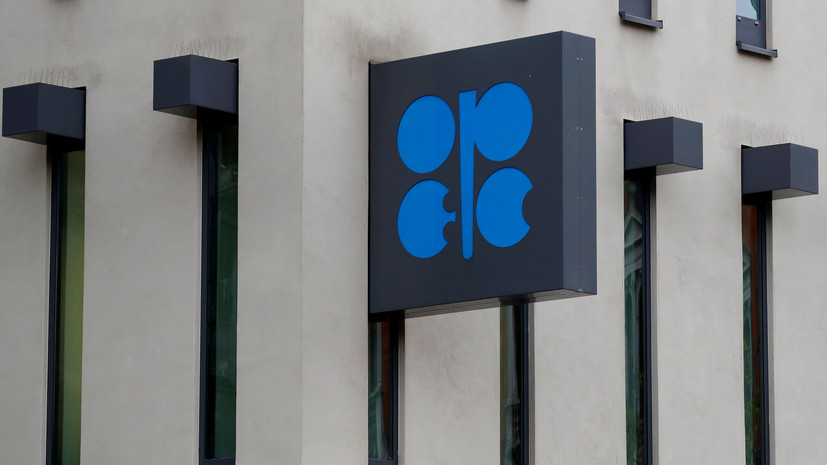OPEC + agreed on measures to reduce oil production to stabilize the market. On Friday, April 10, said the head of the Ministry of Energy of Russia Alexander Novak following the meeting of energy ministers of the G20 countries.
“Everyone agreed that decisive measures should be taken, which include the OPEC and non-OPEC countries to reduce production by 10 million barrels per day in total, by May and June by two months,” the minister said.
Earlier on Friday night, hydrocarbon exporters held almost 10-hour talks on the situation in the global energy market. Following the meeting, most participants agreed to reduce the production of raw materials. The only exception was Mexico, which refused the conditions proposed to it - to reduce oil production by 400 thousand barrels per day.
As Mexico's Minister of Energy Rocio Nale later said, the Latin American country is ready to reduce hydrocarbon production by only 100 thousand barrels per day. On April 10, during a second discussion, the parties nevertheless reached a compromise. So, Mexico has agreed with OPEC + and the United States that the reduction in production in the country will be 100 thousand barrels per day, and the United States will reduce another 250 thousand for it. This was stated by Donald Trump at a White House briefing.
“The United States will help Mexico, they will reimburse us (this. - RT ) sometime later, when they are ready to do it,” TASS quoted the US president.
In total, from May to June, the OPEC + states will jointly reduce oil production from 43.8 million to 33.8 million barrels per day. The main volumes of reduction will be undertaken by Russia and Saudi Arabia. Each of the two countries will have to reduce energy production by 2.5 million barrels per day - up to 8.5 million.
Also, large reductions in oil production should occur in Iraq (by 1 million barrels per day), the United Arab Emirates (by 700 thousand) and Nigeria (by 420 thousand). About this writes TASS with reference to the communiqué following the meeting.
It should be noted that the states renewed their partnership in the OPEC + format after the unexpected collapse of the previous agreement in March. Then the parties to the transaction could not reach a consensus on the new conditions and from April 1 decided to completely abandon all their obligations. This provoked the largest collapse in world oil prices in recent years.
In March, the cost of Brent crude almost doubled and at the moment it fell below $ 22 per barrel - for the first time since March 2002. However, from the beginning of April, against the backdrop of news about a possible restart of the OPEC + deal, quotes began to grow and overcame the psychological mark of $ 30 per barrel. Moreover, in anticipation of negotiations, prices rose briefly to $ 36.
“The agreed production cuts will be enough if only to stop the free fall in prices and not allow quotes to fall below $ 20 per barrel,” Peter Pushkaryov, chief analyst at TeleTrade, told RT.
Meanwhile, according to him, in the near future, the rise in oil prices may be restrained by the situation around the COVID-19 pandemic. According to official data from the World Health Organization (WHO), the total number of people infected in the world exceeded 1.5 million, more than 92 thousand people died. The spread of the disease and quarantine measures provoked a massive reduction in trade, passenger traffic and fuel demand. As a result, energy consumption is also reduced.
“According to experts, about 4 billion people are on self-isolation, which, of course, influenced (economic. - RT ) activity, movement and, accordingly, a drop in world oil demand. We are currently seeing a very strong decline (demand. - RT ) - by 10-15 million barrels per day. This indicator will be even greater, ”said Alexander Novak earlier.
Against the backdrop of rapidly falling demand, the meeting participants decided that the agreement will last until the end of April 2022. It is expected that after June and until the end of 2020, oil production is planned to be reduced from 10 million to 8 million barrels per day, and from January 2021 to April 2022 to 6 million.
Moreover, in the event of a relatively rapid decline in the pandemic, the terms of the transaction may be reviewed, Pushkaryov said.
“The horizon for the extension of the OPEC + transaction until May 2022 seems too long. The global economy, and hence the global demand for oil, will recover much earlier: perhaps even sooner than in a year. In this case, there will be no need for such strict quotas, and it will be necessary to revise the agreement, ”the analyst explained.
At the same time, the weakening of the epidemic may become a determining factor for rising oil prices by the end of the year. This point of view in an interview with RT was voiced by an expert at the Academy of Finance and Investment Management Gennady Nikolaev.
“As soon as governments begin to weaken quarantine measures, and oil refineries begin to increase volumes of purchases, the oil market will gain strength to recover. By the end of the year, quotes may well return to January values of $ 50–55 per barrel, ”Nikolaev explained.

